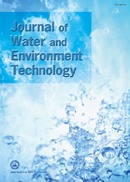
- Issue 6 Pages 199-
- Issue 5 Pages 163-
- Issue 4 Pages 129-
- Issue 3 Pages 77-
- Issue 2 Pages 35-
- Issue 1 Pages 1-
- |<
- <
- 1
- >
- >|
-
Ashraf Elsheikh, Masahiko Sekine, Yuko Horikiri, Sergio Freitas, Ariyo ...Article type: Original Article
2017Volume 15Issue 4 Pages 129-142
Published: 2017
Released on J-STAGE: August 10, 2017
JOURNAL FREE ACCESSThe applicability of EmporeTM styrene-divinylbenzene reverse-phase sulfonated (SDB-RPS) passive sampler disks for integrative sampling of organic chemicals in river water was investigated to evaluate toxicity levels via bioassay using larval medaka (Oryzias latipes). Those disks were deployed for periods of 1, 2, 3, 7, and 10 days (PS different period), and at 2-day intervals over the 10-day sampling period (PS interval). Six 10-L grab samples were collected at the same time as PS interval sampling, and thereafter concentrated using Sep-Pak® Plus PS-2 cartridges (GS). Adsorbed chemicals were subsequently eluted from Sep-Pak cartridges and SDB-RPS disks and prepared for toxicity tests and gas chromatography/mass spectrometry analysis. Compared with all PS samples, GS samples showed strong toxicity results. None of the PS interval samples showed toxicity, even though the amount of adsorbed chemicals in the 2nd interval sample was higher than in PS 7- and 10-day samples, which showed toxicity. Furthermore, the PS 10-day sample contents were not equivalent to the accumulated amounts of adsorbed chemicals in PS interval samples. On the basis of these results, it is assumed that during long-term sampling, chemicals adsorbed on disks might be affected by desorption or decomposition, and that some might be converted to more toxic compounds.
View full abstractDownload PDF (1164K) -
Kazuhisa Mimura, Yoshimasa Watanabe, Hiroshi DeguchiArticle type: Original Article
2017Volume 15Issue 4 Pages 143-151
Published: 2017
Released on J-STAGE: August 10, 2017
JOURNAL FREE ACCESSA small hybrid system for municipal wastewater treatment consisting of a jet mixed separator (JMS) used in a precoagulation/sedimentation process and an aerobic moving bed biofilter (MBB) used in a postbiological oxidation process was developed. The MBB is a type of downflow packed bed aerobic biofilter. It has an airlift mechanism, which refreshes the filter medium during its transport from the bottom to the top of filter bed and thereby prevents clogging of the medium. A majority of influent organic particles in the MBB adsorbed onto the biofilm, and the effluent BOD and SS concentration after 1 h of hydraulic retention time were <20 and ~ 0 mg/L, respectively. The MBB could be continuously operated without removal of excess sludge. This paper describes the mechanism of biological oxidation in the MBB as deduced by measurements of the oxygen uptake rate of the biofilm attached to the anthracite medium in the MBB.
View full abstractDownload PDF (1250K) -
Xiangyong Zeng, Takahiro Hosono, Midori Matsunaga, Hiroto Ohta, Takuro ...Article type: Original Article
2017Volume 15Issue 4 Pages 152-162
Published: 2017
Released on J-STAGE: August 10, 2017
JOURNAL FREE ACCESS
Supplementary materialThe hydrogeological properties of groundwater and behavior of nitrate attenuation in the nitrate-polluted alluvial aquifer, Miyakonojo Basin have been investigated in previous studies, but little knowledge is known about the spatially microbial communities especially associated with nitrate depletion. The objectives of the present study are to reveal the profile of microbial communities in the alluvial aquifer, Miyakonojo Basin, and the association with environmental variations based on cloning-library approach together with hydrogeochemical variables. The results showed that high bacterial diversity was characteristic of a large number of operational taxonomic units unique to the samples. The presence of some human-/livestock related bacteria was consistent with the distribution of high nitrate concentrations, which indicated an influence of hydrogeochemical variables on microbial composition. Methane-producing archaea and ammonia-oxidizing archaea were primarily found in the anoxic and oxic environments, respectively, reflected by the distribution of welded tuff. Additionally, heterotrophic and mixo-/autotrophic denitrifiers were ubiquitously distributed, but denitrification process only occurred under the anoxic environment. Microorganisms involved in the various metabolic processes were found to coexist in the same samples. Together, this study suggested that the description of microbial communities profile and associated putative metabolic processes could reflect the hydrogeochemical conditions of the alluvial aquifer, Miyakonojo Basin.
View full abstractDownload PDF (1593K)
- |<
- <
- 1
- >
- >|